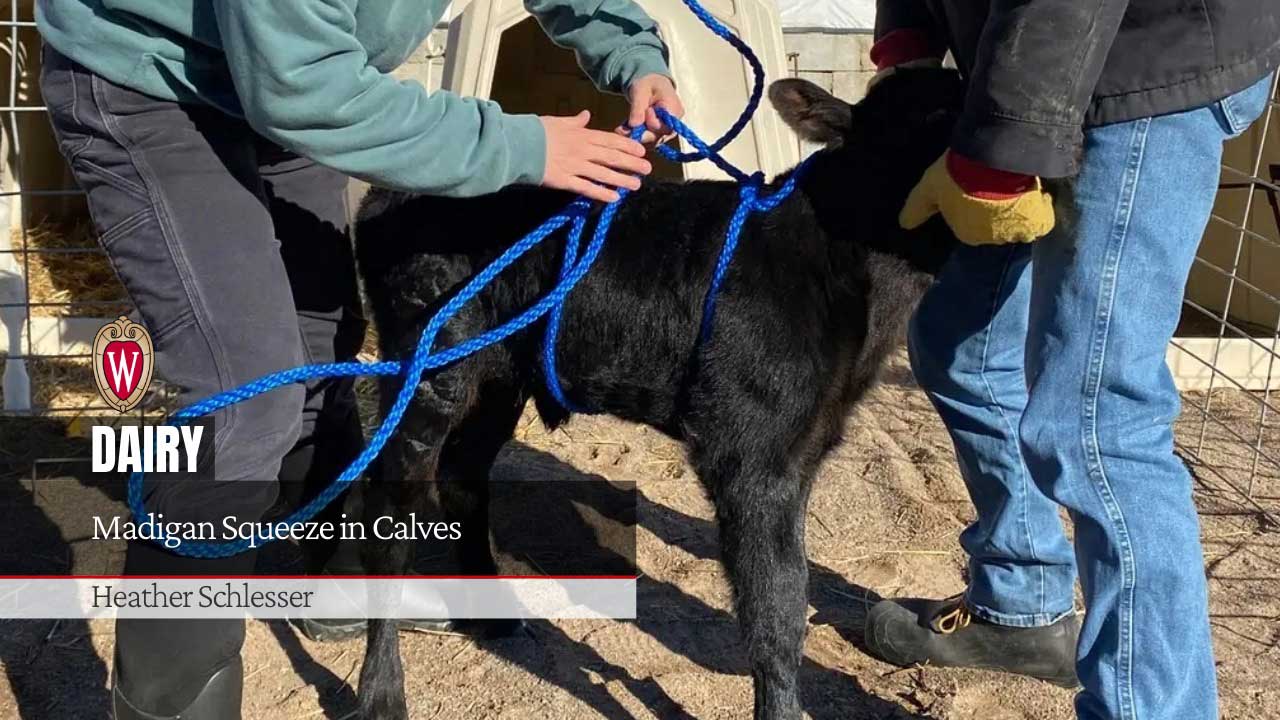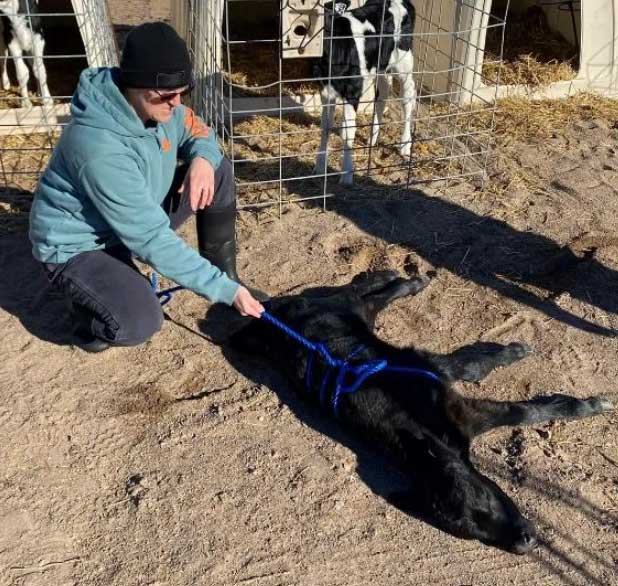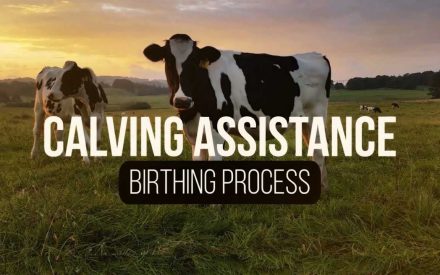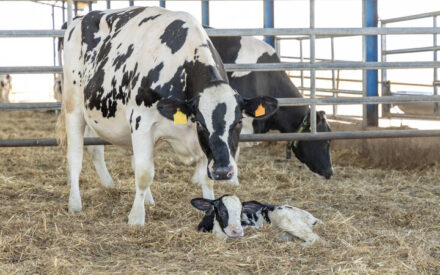
Introduction
The Madigan Squeeze is a technique developed by Dr. John Madigan for treating neonatal maladjustment syndrome in foals¹. Neonatal maladjustment syndrome, or “dummy foal syndrome,” is characterized by failure to stand, suck, and follow their mare. Animals that suffer from neonatal maladjustment syndrome are often born by cesarean section, have a longer than usual or traumatic birth, or some have a normal, quick birth2. Other species, such as sheep and calves, have been shown to suffer from maladjustment syndrome3,4. The Madigan Squeeze technique has been adopted for use in both of these species as well3,4.
Why use the Madigan Squeeze?
Dr. Madigan postulated that the animal needed to transition from a sleep-like state while in the womb to a fully conscious state at birth2, 5, 6. He believes that animals that suffer from neonatal maladjustment did not transition fully into a state of consciousness at birth. By using the Madigan Squeeze, we are recreating the feeling these animals have during stage two labor, allowing them to reset their urge to survive and fully gain consciousness2, 5.
Madigan Squeeze procedure
The Madigan Squeeze procedure should be used within one to two days of birth2 and may be repeated one to two times per day for up to three days5. Do not use on calves with broken ribs or respiratory problems. To perform the Madigan Squeeze, you need a soft rope. Run the rope between the calf’s legs and around its neck. Secure it with a bowline knot. Then wrap it twice around the chest using a half hitch on each loop5. See the image below for proper placement.

Once the rope is placed correctly, position yourself behind the animal and apply gentle pressure, gradually increasing until the animal lies down. Apply pressure (about 10 lbs) for 20 minutes.

Slowly loosen and remove the rope, allowing the animal to get up on its own5. While the Madigan Squeeze is performed, the animal will exhibit a sleep-like state, with closed eyes, no body movements, slow breathing, and a decreased heart rate4.
After the application of the Madigan Squeeze many animals will recover and act normally. Some animals may require multiple “treatments”, so don’t give up if it does not work the first time.
Summary
The Madigan Squeeze technique has been shown to help alleviate neonatal maladjustment syndrome in various livestock species. The Madigan Squeeze technique is quick and significantly less costly than other veterinary treatments. If performing the Madigan Squeeze is unsuccessful, make sure to involve your veterinarian, as early diagnosis usually leads to better outcomes.
Author

Heather Schlesser
County Dairy Educator – Heather Schlesser is an Agriculture Educator in Marathon County. Heather’s research and outreach have included the use of current technology to enhance farm profitability and sustainability. Her current projects include the Animal Wellbeing Conference, the Midwest Manure Summit, Beef Quality Assurance, financial programming, and teaching farmers throughout the Midwest how to breed their own cattle.
Reviewers
References
- Aleman, M., Weich, K. M., & Madigan, J. E. (2017). Survey of Veterinarians Using a Novel Physical Compression Squeeze Procedure in the Management of Neonatal Maladjustment Syndrome in Foals. Animals : an open access journal from MDPI, 7(9), 69. https://doi.org/10.3390/ani7090069
- https://healthtopics.vetmed.ucdavis.edu/health-topics/neonatal-maladjustment-syndrome-livestock. Accessed 10/24/25.
- Flora, T., Smallman, M., & Anne Kutzler, M. (2021). Resuscitation Compression for Newborn Sheep. The Veterinary clinics of North America. Food animal practice, 37(1), 175–181. https://doi.org/10.1016/j.cvfa.2020.10.006
- Stilwell, G., Mellor, D. J., & Holdsworth, S. E. (2020). Potential benefit of a thoracic squeeze technique in two newborn calves delivered by caesarean section. New Zealand veterinary journal, 68(1), 65–68. https://doi.org/10.1080/00480169.2019.1670115
- https://www.youtube.com/watch?v=IlVwUhwuHXk accessed 10/24/25
- Mellor, D.J. Transitions in neuroinhibition and neuroactivation in neurologically mature young at birth, including the potential role of thoracic compression during labour. Aleman, M.;Weich, KM.; Madigan, J.E. Survey of veterinarians using a novel physical compression squeeze procedure in the management of neonatal maladjustment syndrome in foals. Animals 2017, 7, 69–81.


 ▶️ Watch: Calving Assistance-Birthing Process in Cattle (1 of 4)
▶️ Watch: Calving Assistance-Birthing Process in Cattle (1 of 4) Cow fertility in the post-genomic era: progress, challenges, and perspectives
Cow fertility in the post-genomic era: progress, challenges, and perspectives Activity Monitoring Technology for Reproductive Management of Dairy Cows
Activity Monitoring Technology for Reproductive Management of Dairy Cows Calves Get Stressed Too: What Dairy Farmers Need to Know
Calves Get Stressed Too: What Dairy Farmers Need to Know


